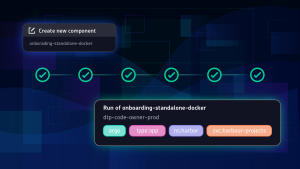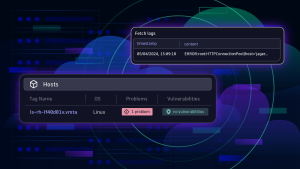As cloud spend continues to reach new heights, organizations need a new approach to keep costs in check. Enter FinOps, a public cloud management philosophy that aims to control costs.
Spiraling cloud architecture and application costs have driven the need for new approaches to cloud spend.
Nearly half (49%) of organizations believe their cloud bill is too high, according to a CloudZero survey. Further, a Flexera report found that small to medium-sized businesses spend approximately $1.2 million on cloud computing, while large enterprises shell out upward of $12 million annually.
That’s where FinOps can help. This public cloud management discipline provides IT, DevOps, CloudOps, finance, and business teams with continuous cost optimization tools and accurate accounting of cloud resources. The result is smarter, data-driven solutions designed to manage cloud spend.
What is FinOps?
FinOps is a cloud financial management philosophy and practice that strives to control the cost of cloud adoption strategies without restricting the scope of cloud resources.
FinOps helps engineering, development, finance, and business teams meet critical key performance indicators (KPIs) and fulfill service-level agreements. Today, many global industries implement FinOps, including telecommunications, retail, manufacturing, and energy conservation, as well as most Fortune 50 companies.
This practice isn’t just about reducing costs. FinOps aims to support the best cloud spend that maximizes the value of all necessary computing resources.
What are the key principles of FinOps?
To ensure the best results, it’s important to establish and adhere to the following key FinOps principles across all teams and departments:
- Cross-team FinOps visibility. Ensure all teams have granular visibility into cloud usage and spending in real time, with costs mapped to business units for better reporting and budget allocation.
- Ownership of cloud usage. Establish continuous, automated policy-based compliance for all teams throughout all cloud platforms. This helps to prevent overprovisioning, underutilization of reserved instances, and hidden costs.
- FinOps company culture. Create optimization strategies with realistic goals for each team. Additionally, include benchmarks for stakeholders and best practices that support the anticipated growth of the organization as a whole.
FinOps becomes more critical as organizations grow
The value of FinOps lies in its potential to move organizations toward financial success with smart, cost-efficient cloud spend implemented from day one.
A McKinsey & Company FinOps study indicated that “enterprises often don’t develop at-scale FinOps capabilities until their spending on cloud architecture reaches $100 million per year.”
But, in reality, that means organizations are waiting far too long before they institute financial optimization measures. Taking this common, fiscally conservative, wait-and-see approach can end up being more costly. It involves a greater effort to transition teams from a data center approach to a cost-effective cloud consumption mentality.
The study also found that many FinOps teams focus largely on operational tasks such as tagging — i.e., attaching a label on an instance or product to identify and group resources in a common entity to lower costs — and contract management. High-impact strategic cloud initiatives, however, may be as valuable or more so.
A few examples of FinOps strategic cloud initiatives include the following:
- Cloud-unit economics. Assess direct revenues and costs of every transaction in the cloud on a per-unit basis to reveal the business value of cloud spend.
- Consumption forecasting. Take the necessary steps to evaluate and predict future cloud spend based on existing usage rates and future anticipated peak or decreased loads.
- FinOps behavioral change management. Establish a FinOps culture that supports buy-in from all stakeholders, as well as metrics that all teams understand and use. It’s also important to provide training for engineers, developers, chief information officers, and any others as needed.
Public, private, and hybrid cloud computing platforms such as Microsoft Azure and Google Cloud provide access, development, and management of cloud applications and services. They also offer FinOps strategies and tips to help companies identify cost-saving opportunities and maximize cloud investments.
Maximizing the benefits of FinOps
In addition to optimizing cloud usage and cost efficiency, FinOps can provide several benefits, such as the following:
- driving business innovation by freeing resources for new projects;
- enabling trust and increased collaboration among teams;
- preventing cloud sprawl and overprovisioning of cloud resources; and
- improving financial responsibility of teams and the organization as a whole.
The challenges of implementing FinOps
FinOps is not devoid of organizational pushback and development obstacles. There are some challenges with implementing FinOps.
Aligning technology and finance teams
Engineers focus on cloud computing, innovation, and moving workloads to the cloud, while finance teams focus on minimizing costs. FinOps requires both teams to work together to develop goals for cloud utilization and KPIs to measure success or the need for improvement.
Motivating teams to take action
Developers need the freedom to “fail fast” and take risks without worrying about cloud costs to improve continuous integration and continuous delivery processes. Sharing cloud spend and creating important cost-efficient solutions are key to achieving companywide initiatives that can accelerate FinOps buy-in and compliance.
Allocating shared costs
Unallocated shared costs hinder the transparency and accounting accuracy of cloud spending. Identify shared costs and predict the spreading of cost in the total budget for each team.
Reducing waste and unused resources
Workloads that exceed agreed-upon capacity and unused or orphan resources — such as a disk not attached to an instance — increase cloud waste. Adopting observability and monitoring tools can effectively detect and eliminate unused resources to prevent waste.
Using observability in your FinOps strategy
A unified cloud observability and intelligence platform provides visibility into the use of cloud resources in real time. It automatically allocates resources or eliminates unused ones with assistance from machine learning and AI, as needed, based on demand. An intelligent observability platform also autonomously identifies unusual costs or overspending with cost anomaly detection for valuable, in-depth FinOps insight to help manage cloud spend.
Learn more about Dynatrace intelligent observability for the modern cloud with Davis AI. And find out how it can help get your FinOps practice up and running from the start.





Looking for answers?
Start a new discussion or ask for help in our Q&A forum.
Go to forum